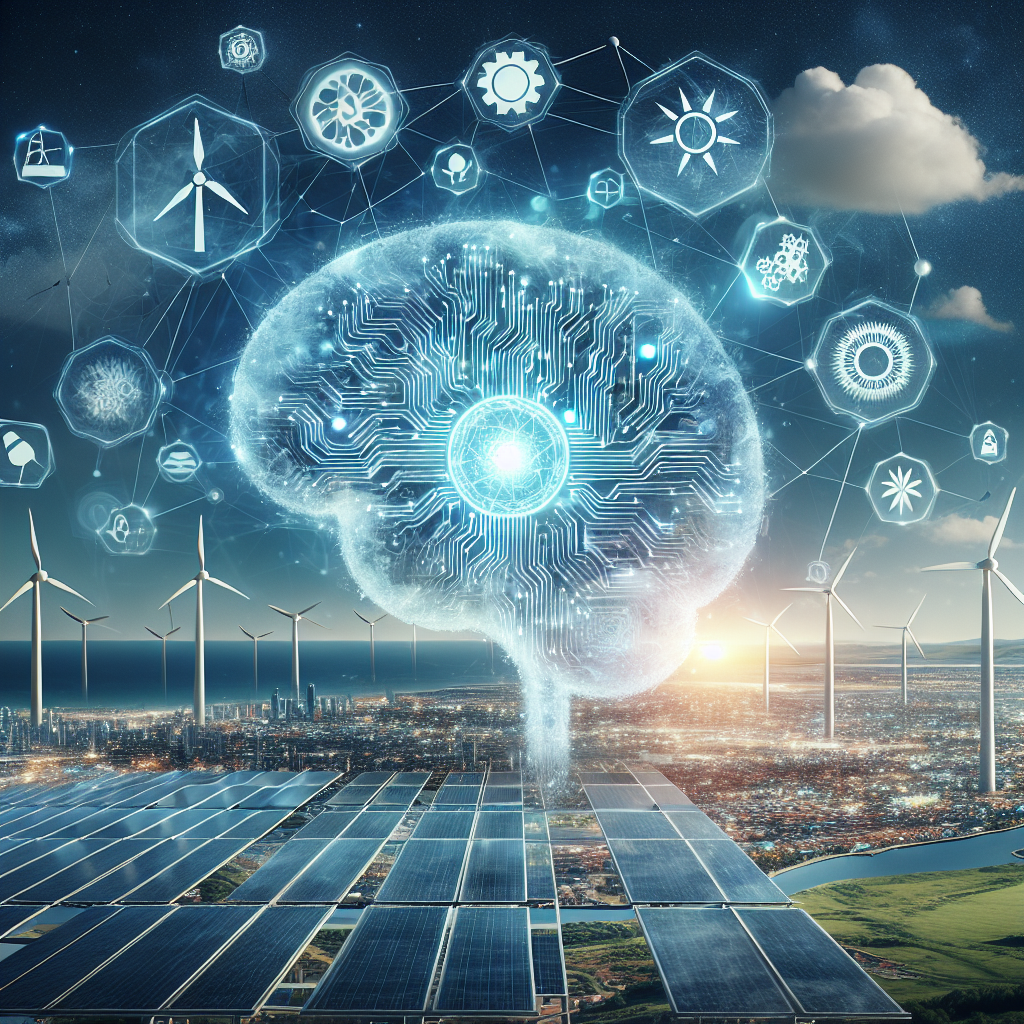Artificial Intelligence (AI) has been making significant strides in transforming various industries, and one sector that has seen a major impact is renewable energy. AI technologies are being used to improve the efficiency, reliability, and cost-effectiveness of renewable energy sources such as solar, wind, and hydro power. In this article, we will explore how AI is revolutionizing the renewable energy sector and the various applications that are driving this transformation.
1. Predictive Maintenance
One of the key ways AI is transforming the renewable energy sector is through predictive maintenance. By using AI-powered algorithms, renewable energy companies can predict when equipment such as solar panels or wind turbines are likely to fail, allowing for proactive maintenance to be carried out. This not only reduces downtime and maintenance costs but also ensures that the renewable energy sources are operating at peak efficiency.
2. Power Grid Optimization
AI is also being used to optimize power grids that incorporate renewable energy sources. With the increasing penetration of solar and wind power, power grids need to be able to handle the variability and intermittency of these sources. AI technologies can help in balancing supply and demand, optimizing energy storage, and managing grid stability in real-time. This results in a more reliable and efficient power grid that can better integrate renewable energy sources.
3. Energy Forecasting
AI algorithms are being used to improve the accuracy of energy forecasting for renewable energy sources. By analyzing historical data, weather patterns, and other relevant factors, AI can provide more accurate predictions of energy production from sources such as solar and wind power. This enables energy operators to better plan and manage their energy generation, leading to improved efficiency and cost savings.
4. Autonomous Energy Systems
AI is also driving the development of autonomous energy systems that can operate and optimize renewable energy sources without human intervention. These systems can adjust energy production, storage, and distribution based on real-time data and changing conditions, maximizing the efficiency and reliability of renewable energy sources. Autonomous energy systems are a key area of research and development in the renewable energy sector, with the potential to revolutionize how energy is produced and consumed.
5. Remote Monitoring and Control
AI technologies are enabling remote monitoring and control of renewable energy assets, allowing operators to manage and optimize their systems from anywhere in the world. By using AI-powered sensors and devices, operators can collect real-time data on energy production, equipment performance, and environmental conditions, enabling them to make informed decisions and take proactive actions to maximize the efficiency and reliability of their renewable energy sources.
6. Energy Trading and Market Optimization
AI is also being used to optimize energy trading and market operations in the renewable energy sector. By analyzing market trends, demand patterns, and other factors, AI algorithms can help energy operators to make smarter decisions on when to buy, sell, or store energy. This can lead to cost savings, improved profitability, and better integration of renewable energy sources into the energy market.
7. Environmental Impact Assessment
AI technologies are being used to assess the environmental impact of renewable energy projects, helping operators to minimize their carbon footprint and comply with regulatory requirements. By analyzing data on land use, wildlife habitats, and other environmental factors, AI can provide insights into the potential impact of renewable energy projects and suggest mitigation measures to minimize harm to the environment.
In conclusion, AI is transforming the renewable energy sector in numerous ways, from predictive maintenance and power grid optimization to energy forecasting and autonomous energy systems. The applications of AI in renewable energy are diverse and far-reaching, with the potential to revolutionize how energy is produced, stored, and distributed. As AI technologies continue to advance, we can expect even greater innovations and improvements in the renewable energy sector, leading to a more sustainable and efficient energy future.
FAQs:
Q: How is AI improving the efficiency of renewable energy sources?
A: AI technologies are being used to optimize the operation and maintenance of renewable energy sources, leading to improved efficiency, reliability, and cost-effectiveness.
Q: What are some of the key applications of AI in the renewable energy sector?
A: Some key applications of AI in the renewable energy sector include predictive maintenance, power grid optimization, energy forecasting, autonomous energy systems, remote monitoring and control, energy trading, and environmental impact assessment.
Q: How can AI help in balancing supply and demand in power grids with renewable energy sources?
A: AI algorithms can analyze real-time data on energy production, demand, and grid stability to optimize the balance between supply and demand, ensuring a reliable and efficient power grid that can better integrate renewable energy sources.
Q: What are the benefits of using AI in the renewable energy sector?
A: The benefits of using AI in the renewable energy sector include improved efficiency, reliability, and cost-effectiveness of renewable energy sources, as well as better integration into power grids and energy markets.
Q: What are some challenges in implementing AI in the renewable energy sector?
A: Some challenges in implementing AI in the renewable energy sector include data quality and availability, regulatory barriers, and the need for skilled professionals to develop and deploy AI solutions.

